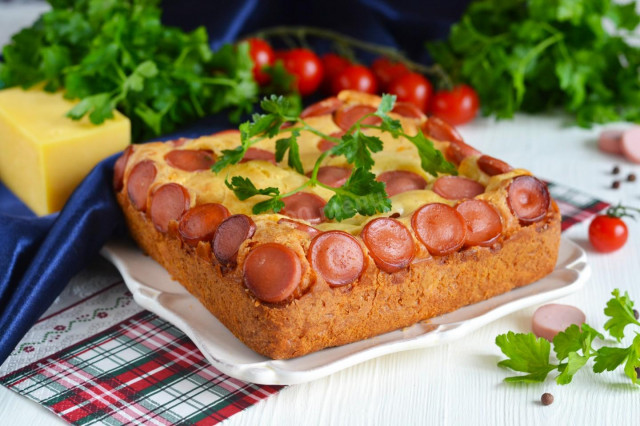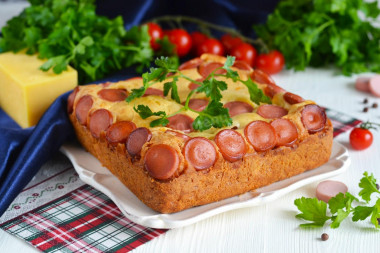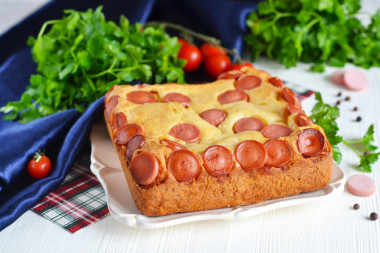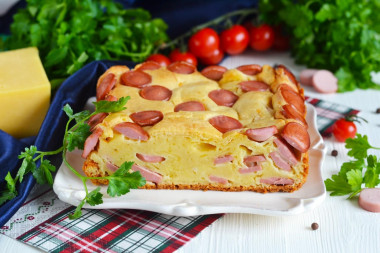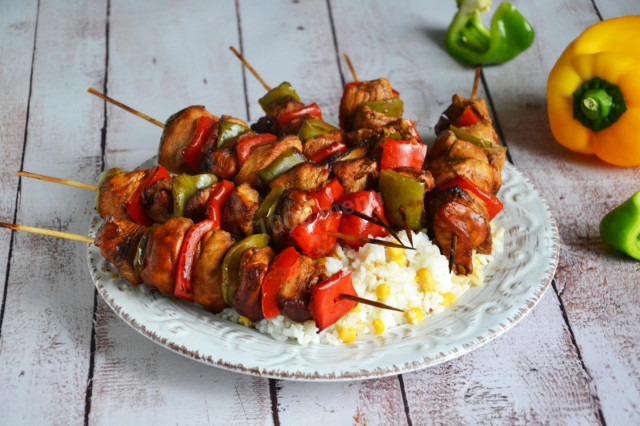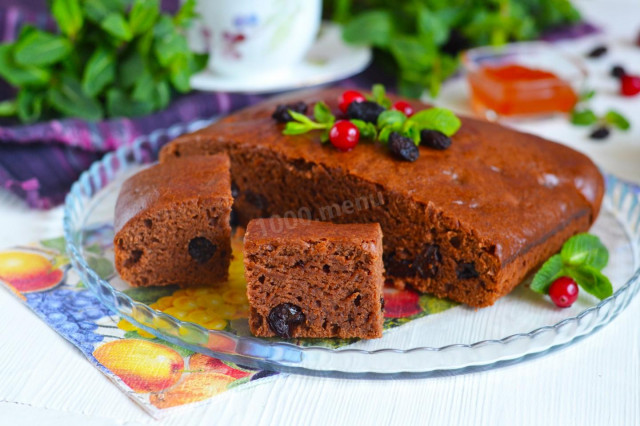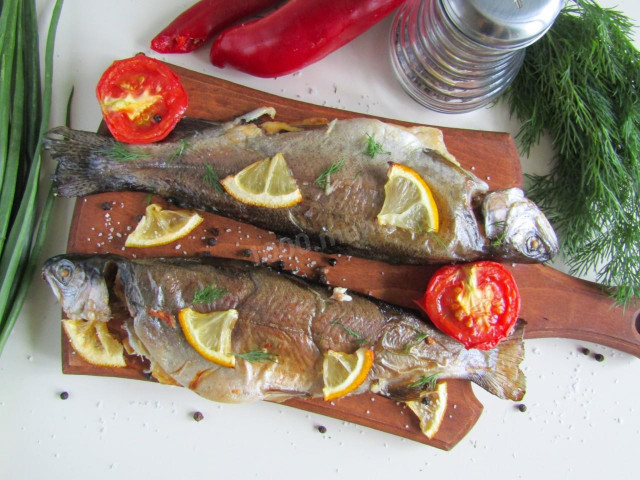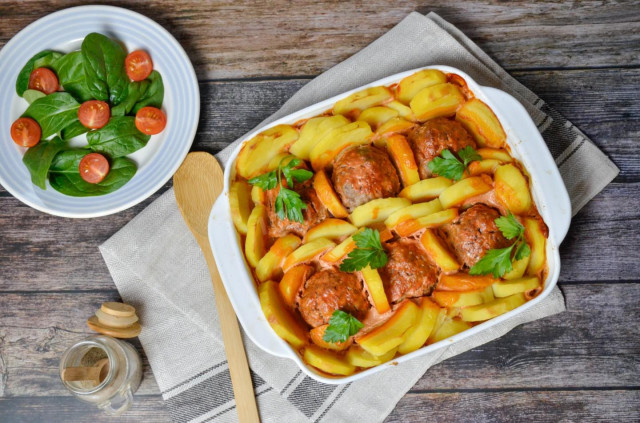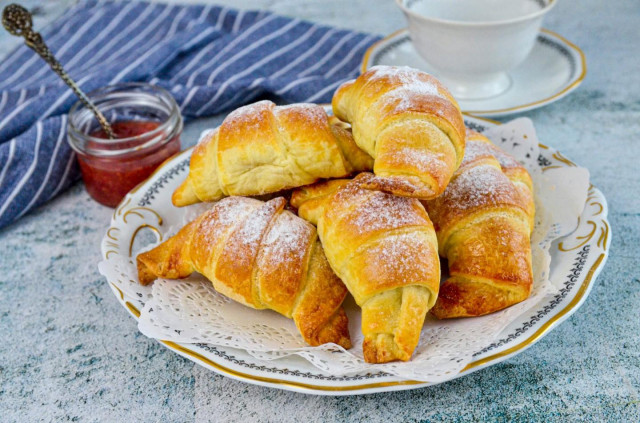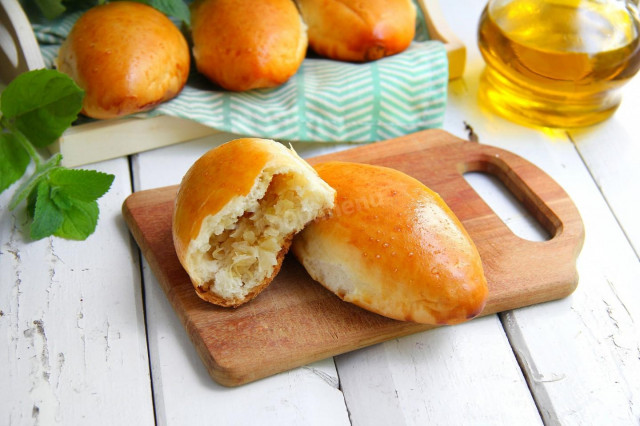Composition / ingredients
Step-by-step cooking
Step 1:
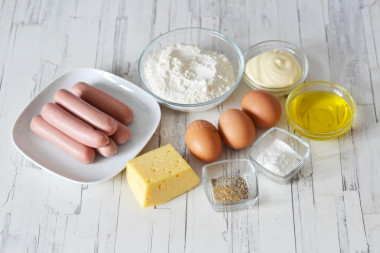
How to bake a sausage and cheese pie? Very simple. First, prepare all the ingredients according to the list. Take any sausages that you like best, but they should not be very salty, otherwise the pie may taste salty. Take large, selected eggs. If the eggs are small, for example 2 categories, take 4 pieces. Use flour of the highest grade.
Step 2:
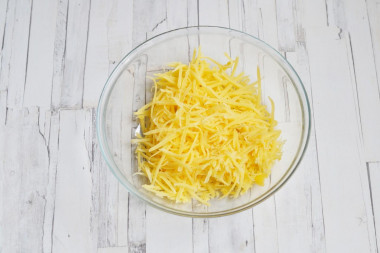
Grate the cheese on a coarse grater. You can take any cheese. The main thing is that it is delicious and not too salty. If you have very salty cheese, then perhaps you will need to add very little salt to the dough, or not at all.
Step 3:
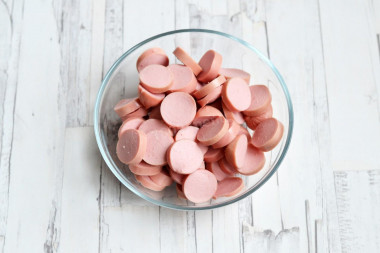
Cut the sausages into circles. Leave some of the circles to decorate the top of the pie.
Step 4:
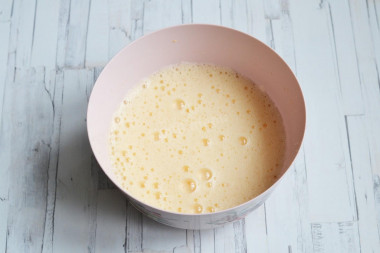
In a bowl, beat the eggs until fluffy. There should be a lot of air bubbles on the surface.
Step 5:
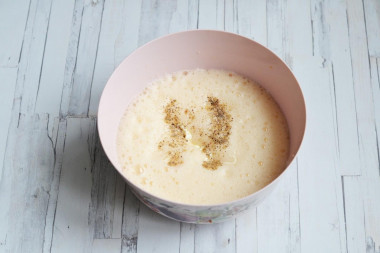
Pour in vegetable oil, add mayonnaise, add salt and pepper and whisk everything again. If you have very salty sausages and /or cheese, add salt to the dough carefully so as not to over-salt the dish. If there is mayonnaise in the dough, additional salt may be superfluous at all. Taste the dough.
Step 6:
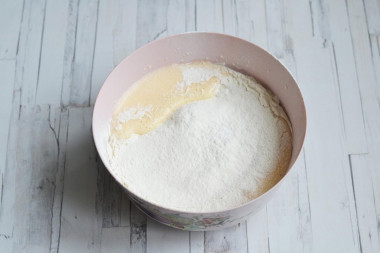
Sift flour with baking powder and pour into the dough. Beat everything with a mixer until smooth.
Step 7:
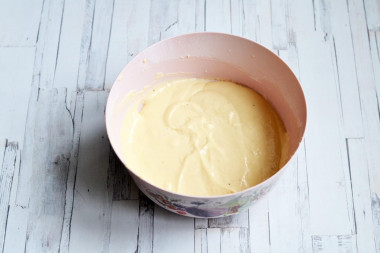
You should get a viscous, but flowing dough. If the dough turns out to be too dense, you can dilute it with a little vegetable oil. If too liquid - add a little more flour.
Step 8:
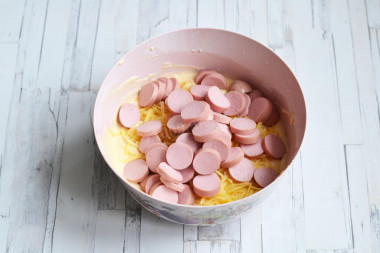
Add grated cheese and sliced sausages to the dough and mix everything well with a spatula.
Step 9:
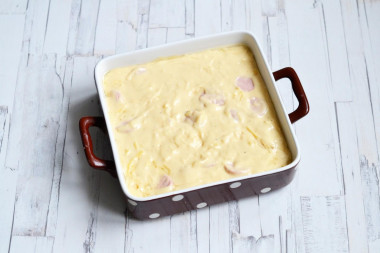
Put the dough in a baking dish lined with parchment and greased with oil and smooth it out. Depending on the size of your mold, the thickness of the pie may be different and, accordingly, the baking time will also be different. I have a form with a side of 18 cm.
Step 10:
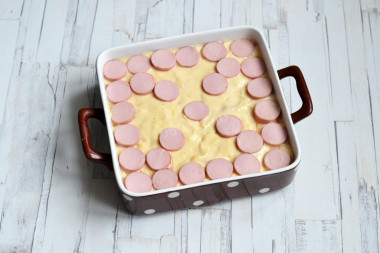
Put the postponed sausage circles on top of the dough. Bake the pie in a preheated 180 ° C oven for about 30 minutes. The pie will rise a lot, but it will drop a little when it cools down. Inside, the pie turns out slightly moist because of the cheese and juicy.
Step 11:
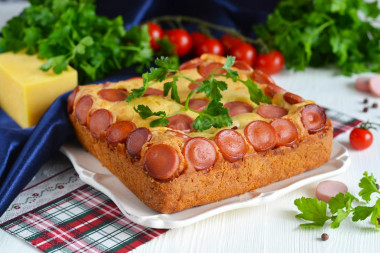
Put the finished pie on a platter, cut into pieces and serve to the table. Bon appetit!
Be prepared for the fact that you may need more or less flour than indicated in the recipe. Focus not on the amount of flour, but on the desired consistency of the dough. To avoid mistakes, read about flour and its properties!
Is it possible to replace baking powder with soda, how to add them correctly so that the baking is lush, how to avoid an unpleasant soda taste and much more, read the article "Baking powder or baking soda - which is better?"
Keep in mind that everyone's ovens are different. The temperature and cooking time may differ from those specified in the recipe. To make any baked dish successful, use useful information about the features of ovens !
Caloric content of the products possible in the composition of the dish
- Chicken egg - 157 kcal/100g
- Egg white - 45 kcal/100g
- Egg powder - 542 kcal/100g
- Egg yolk - 352 kcal/100g
- Ostrich egg - 118 kcal/100g
- Dutch cheese - 352 kcal/100g
- Swiss cheese - 335 kcal/100g
- Russian cheese - 366 kcal/100g
- Kostroma cheese - 345 kcal/100g
- Yaroslavsky cheese - 361 kcal/100g
- Altai cheese 50% fat content - 356 kcal/100g
- Soviet cheese - 400 kcal/100g
- Cheese "steppe" - 362 kcal/100g
- Uglichsky cheese - 347 kcal/100g
- Poshekhonsky cheese - 350 kcal/100g
- Lambert cheese - 377 kcal/100g
- Appnzeller cheese with 50% fat content - 400 kcal/100g
- Chester cheese with 50% fat content - 363 kcal/100g
- Edamer cheese with 40% fat content - 340 kcal/100g
- Cheese with mushrooms of 50% fat content - 395 kcal/100g
- Emmental cheese with 45% fat content - 420 kcal/100g
- Gouda cheese with 45% fat content - 356 kcal/100g
- Aiadeus cheese - 364 kcal/100g
- Dom blanc cheese (semi-hard) - 360 kcal/100g
- Lo spalmino cheese - 61 kcal/100g
- Cheese "etorki" (sheep, hard) - 401 kcal/100g
- White cheese - 100 kcal/100g
- Fat yellow cheese - 260 kcal/100g
- Altai cheese - 355 kcal/100g
- Kaunas cheese - 355 kcal/100g
- Latvian cheese - 316 kcal/100g
- Limburger cheese - 327 kcal/100g
- Lithuanian cheese - 250 kcal/100g
- Lake cheese - 350 kcal/100g
- Gruyere cheese - 396 kcal/100g
- Ground black pepper - 255 kcal/100g
- Whole durum wheat flour fortified - 333 kcal/100g
- Whole durum wheat flour universal - 364 kcal/100g
- Flour krupchatka - 348 kcal/100g
- Flour - 325 kcal/100g
- Salad mayonnaise of 50 % fat content - 502 kcal/100g
- Light mayonnaise - 260 kcal/100g
- Provencal Mayonnaise - 624 kcal/100g
- Provencal mayonnaise - 627 kcal/100g
- Table mayonnaise - 627 kcal/100g
- Vegetable oil - 873 kcal/100g
- Salt - 0 kcal/100g
- Milk sausages - 266 kcal/100g
- Sausages "Russian" - 243 kcal/100g
- Pork sausages - 324 kcal/100g
- Canned sausages - 228 kcal/100g
- Baking powder - 79 kcal/100g

